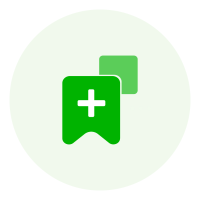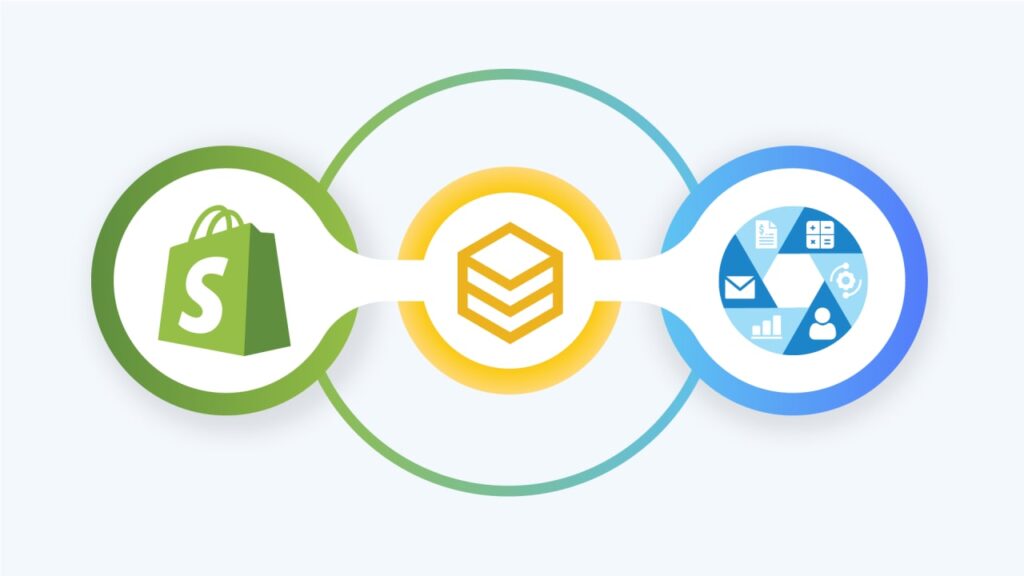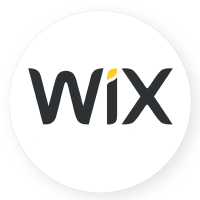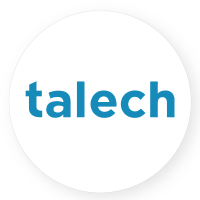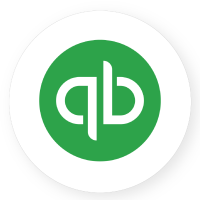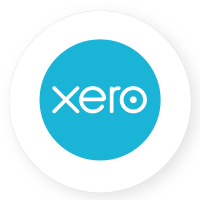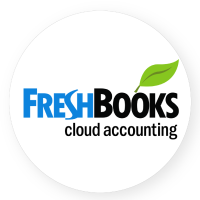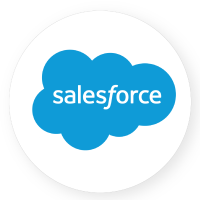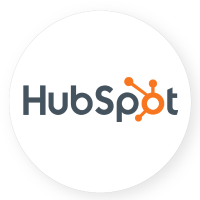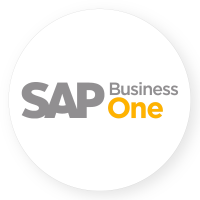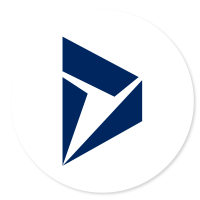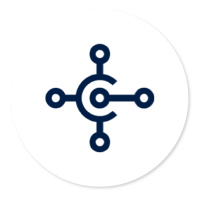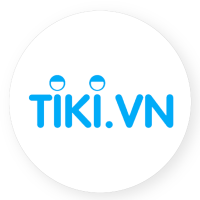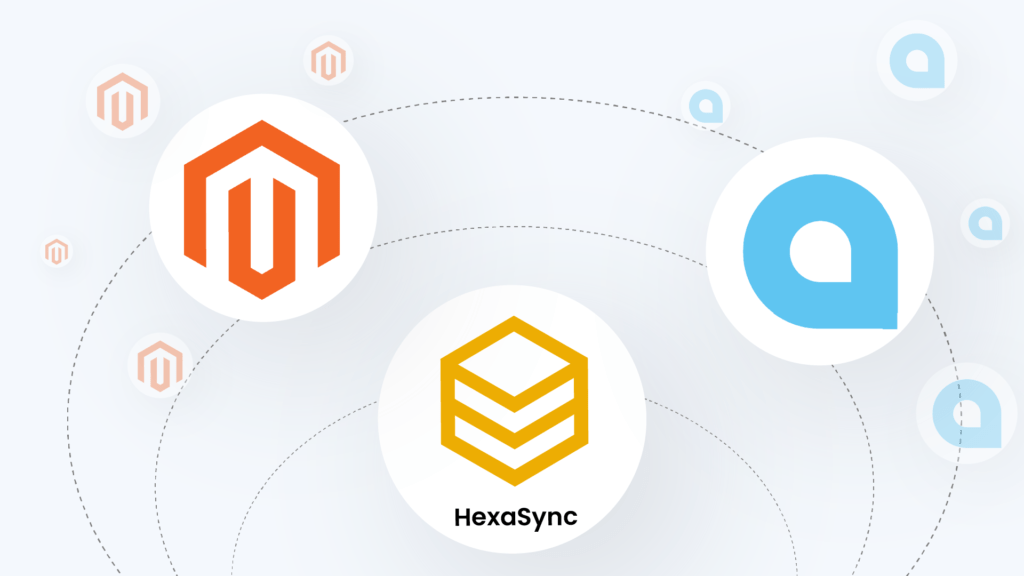Microsoft Dynamics is a LOB (line-of-business) solution that includes Microsoft ERP and CRM software applications. It provides businesses with a platform to manage their financials, supply chain, project management, and customer interactions in a single integrated system.
However, both being a newbie and knowing about Microsoft Dynamics could be confused with Microsoft’s product name. In this article, we’d like to clarify all common Microsoft Dynamics products, including the legacy versions and all the modern Microsoft Dynamics 365 series.
- The legacy Microsoft Dynamics Versions: Dynamics AX, Dynamics GP, Dynamics NAV, Dynamics SL, Dynamics CRM.
- The modern Microsoft Dynamics 365 Series: Dynamics 365 Business Central, Dynamics 365 Finance, Dynamics 365 Supply Chain Management, Dynamics 365 Customer Service, Dynamics 365 Sales
Table of Contents
The Legacy Microsoft Dynamics Versions
What is Microsoft Dynamics AX?
Microsoft Dynamics AX (previously known as Axapta) is an ERP software package for finance and operations. It provides various functionalities for global enterprises to manage financial, supply chain, and operational processes. Moreover, it can be customized to fit the specific needs of each organization.
Dynamics AX is designed for medium- and large-size organizations in many industries, such as manufacturing, retail, distribution, services, the public sector, and healthcare. In the future, Microsoft Dynamics AX will be developed and expanded to apply to more fields.
According to Slintel, Dynamics AX has over 9000 users and accounts for 8.41 percent of the ERP market. Although Dynamics AX had a relatively small market share compared to others, for example, SAP or Odoo, it was widely used by medium- to large-sized organizations in France, the US, the UK, Germany, India, and so on.
The history of Microsoft Dynamics AX
Microsoft Dynamics AX has a long history dating back to the 1980s when the first version was launched under the name Axapta. It was developed through a collaboration between IBM and a Danish firm. In 2002, Microsoft acquired Axapta and then rebranded it as Microsoft Dynamics AX.
Over the years, Microsoft has continued to invest in Dynamics AX to support over 25 countries and 23 languages. It includes versions of
- Microsoft Dynamics AX 4.0 (launched in March 2006)
- Microsoft Dynamics AX 5.0 (Microsoft Dynamics AX 2009)
- Microsoft Dynamics AX 6.0 (Microsoft Dynamics AX 2012)
- Microsoft Dynamics AX 2012 R2 (launched in December 2012)
In 2016, Microsoft migrated and rebranded Dynamics AX to Dynamics 365 F&O, which offers the same solution as Dynamics AX but works on the cloud. In 2018, Microsoft separated Dynamics 365 F&O into Microsoft Dynamics 365 Finance and Dynamics 365 Supply Chain Management. These cloud-based versions deliver a comprehensive solution to manage financial, supply chain, and operation processes for medium- and large-sized organizations.
What is Microsoft Dynamics GP?
Microsoft Dynamics GP (previously known as Great Plains) is a mid-market ERP software that helps organizations manage their financial, supply chain, and operational processes. It is designed to meet mid-sized organizations’ needs and assist businesses in streamlining their operations, making better decisions, and driving growth.
Dynamics GP provides a comprehensive solution for various business aspects, such as financial management, supply chain management, project management, sales and purchasing, inventory and order management, human resources, and payroll. There are a lot of industries that can adopt Dynamics GP to automate and manage their businesses, including
- Manufacturing
- Distribution
- Professional service
- Retail
- Healthcare
According to Slintel, Dynamics GP has 0.56 percent of the market share and is used by over 9400 users. The solution has evolved into Microsoft Dynamics 365 Business Central, which is part of Microsoft’s broader Dynamics 365 suite of business applications.
The History of Microsoft Dynamics GP
The first version of Dynamics GP was Great Plains, created by the Burgum family. It works on a DOS-based accounting system to help the Burgum family manage their business transactions. Since 1986, the Great Plains DOS version had become famous, so they launched the window-based accounting version with the name Great Plains Dynamics in 1993.
A few years later, in 2000, Microsoft acquired Great Plains Dynamics, which was completed in 2001, and renamed it Microsoft Dynamics GP. Over the years, Microsoft has invested in Dynamics GP to provide improved versions. For example,
- 2003: Microsoft released Dynamics GP 9.0, which offers many features to manage the financial, supply chain, and operation processes.
- 2010: Microsoft launched Dynamics GP 2010, which includes new features and enhancements to improve the user experience.
- 2013: Microsoft Dynamics GP 2013 was released with a new web client, a new role-tailored user interface, and improved reporting and analytics capabilities.
- 2018: Microsoft Dynamics 2018 has some new updates and enhancements in the financial, supply chain, project process, and others.
Today, Microsoft Dynamics GP is part of Microsoft’s broader Dynamics 365 suite of business applications and is widely recognized as a leading enterprise resource planning (ERP) solution for midsize organizations.
What is Microsoft Dynamics NAV?
Microsoft Dynamics NAV (previously known as Navision) is an ERP software solution that uses the proprietary programming language C/AL. It is designed for small and medium-sized businesses to help them manage their finances, sales, purchasing, supply chain, and operations.
According to Infocluth, Microsoft Dynamics NAV is the 4th most popular ERP solution for SMBs in Canada, the US, Brazil, the UK, Egypt, Saudi Arabia, Pakistan, India, and Australia. It is widely applied in many industries, such as
- Manufacturing
- Wholesale distribution
- Retail
- Service industries
- Construction
- Professional services
History of Microsoft Dynamics NAV
The original version of Dynamics NAV is the product launched by Navision Accounting Software A/S in 1983. They developed Navision Accounting Software (now Dynamics NAV) for a single user. Then, they decided to expand to multiple users for small and medium businesses, offering solutions to manage their finances and supply chain management processes.
In 2002, Microsoft acquired Navision Software A/S, integrated it, and renamed it Microsoft Dynamics Navision. Microsoft continued to develop to add new features and capabilities to meet changing customer needs.
In 2005, Microsoft used SharePoint technology to launch a product named Microsoft Dynamics NAV. This version assisted associations between partners, employees, and customers.
Since 2018, Microsoft Dynamics NAV has been rebranded as Microsoft Dynamics 365 Business Central, which includes a suite of cloud-based business applications for finance, sales, customer service, and operations. This cloud version offered the same capabilities and features as the on-premise version but increased security and accessibility.
The Microsoft Dynamics NAV 2021, which was released in 2020, includes a range of updates and enhancements to the solution. It includes improved reporting and analytics capabilities, improved integration with other Microsoft products, and new mobile capabilities.
What is Microsoft Dynamics SL?
Microsoft Dynamics SL (previously known as Dynamics Solomon) is an ERP software solution that helps project-based businesses serve professional services and government contractors. It offers solutions that deliver services on time and within budget and provides various features, such as
- Project management
- Financial management
- Supply chain management
- Job costing, time, and expense management
- Reporting and analytics
According to Slintel, Dynamics SL has 0.35 percent of the market share and is used by over 900 users. Microsoft Dynamics SL is adopted in a variety of project-based industries, such as professional services, government contractors, engineering and construction, and architecture.
History of Microsoft Dynamics SL
The first version of Microsoft Dynamics SL was released in 1993 by Solomon Software Company, which was acquired by Great Plains. This solution provided project-based businesses with a comprehensive financial management system.
In 2007, Microsoft acquired Great Plains and rebranded the Solomon product as Microsoft Dynamics SL. They kept investing and releasing new versions with new features and capabilities. Now, Microsoft has developed Dynamics SL to become the leading ERP solution for project-based businesses.
What is Microsoft Dynamics CRM?
Microsoft Dynamics CRM offers solutions to improve customer satisfaction, increase customer loyalty and engagement, and drive sales growth. It is designed for small and medium-sized organizations that want to manage customer relationships and interactions on a budget.
In addition, some large enterprises in particular industries, such as financial services, insurance, and healthcare, also use Dynamics CRM to meet complex needs. It entails automating key business processes and getting better at customer behaviors and preferences.
According to Slintel, Dynamics CRM has a 6.26 percent market share and over 20,000 users. It includes various countries, such as the United States, the United Kingdom, Canada, Australia, the Netherlands, India, and Germany.
History of Microsoft Dynamics CRM
The original version of Dynamics CRM is a customer relationship management solution developed by Falkonry Systems, a CRM software company. In 2001, Microsoft acquired the Falkonry system and integrated it into the Microsoft Dynamics product suite.
Two years later, Microsoft released the first version of Microsoft CRM, which offers a solution to manage customer relationships and interactions. Over the years, Microsoft has continued to invest in and update various new versions to meet changing customer needs.
In 2016, Microsoft migrated and separated Dynamics CRM into cloud-based Dynamics 365 Customer Service and Dynamics 365 Sales in the Dynamics 365 product line. This new platform offered a more integrated and streamlined experience for users.
How to distinguish the legacy Microsoft Dynamics Products?
The following comparison table will give you an overview of all previous versions of Microsoft products.
| Feature | Dynamics AX | Dynamics GP | Dynamics NAV | Dynamics SL |
| Target Market | Large enterprises | Small to mid-sized businesses | Small to mid-sized companies | Project-based businesses |
| Industry Focus | Manufacturing Retail Services Public sector |
Wholesale distribution Service industries Nonprofit organizations |
Wholesale distribution Retail Professional services Construction |
Project-based service industries |
| Features | Financial management Supply chain management Project management Sales and marketing Human resources Manufacturing Retail management Customization and Extension Advanced analytics |
Financial management Supply chain management Sales and Purchasing Project management Human Resources and Payroll Manufacturing Customization Advanced analytics Mobile access |
Financial management Supply chain management Project management Sales and marketing Human resources Manufacturing Customization Mobile app Advanced analytics |
Project management Financial management Supply Chain Management Job costing, time, and expense management Reporting and analytics |
| Integration | Integrates with other Microsoft products | Integrates with other Microsoft products | Integrates with other Microsoft products | Integrates with other Microsoft products |
We’ve provided an overview of the previous Microsoft Dynamics versions. Currently, most businesses use the cloud-based version of the Microsoft Dynamics 365 product line. In the next section, we’d like to introduce the basics of Microsoft Dynamics 365. Please keep reading!
The modern cloud-based Microsoft Dynamics 365 series
What is Microsoft Dynamics 365?
Microsoft Dynamics 365 is a portfolio of Microsoft ERP and CRM applications in the cloud that support businesses to manage customer relationships, operations, and finances. Dynamics 365 has various features to help organizations run effective operations, such as
- Customer relationship management: sales, customer service, and marketing automation
- Enterprise resource planning: financial management, supply chain management, and operations
- Business intelligence and analytics
- Artificial intelligence (AI) and machine learning
- Power Platform is a low-code platform for building custom apps and automating processes.
Microsoft Dynamics 365 has invested in and developed two versions: Microsoft Dynamics 365 Enterprise Edition and Microsoft Dynamics 365 Business Edition
| On-premise | Cloud | |
| Host | On the main server | In the cloud |
| Licenses | Purchase the software license once | Increase recurring license costs over time |
| Data | – Stored on the server- Keep data in-house | Stored on Microsoft’s secure servers |
| No responsibility | Hardware maintenance | No hardware requirement |
| Responsibility | – maintaining the infrastructure – configuring recovery solutions – creating and managing sandbox/testing environments – scheduling operating system updates. |
Less effort to maintain Dynamics 365 online |
| Benefits | Better control data Work with a simple internet connection |
– More flexibility: user can easily scale up/down or integrate with other applications – Remote access – Improve security and reliability – Easy to upgrade – Integration with the Microsoft ecosystem |
| Disadvantages | – High cost of infrastructure maintenance – Higher setup cost – Internal update – No access to cloud-based service: – Power BI, Power Apps, Power Automate, Web Portals, etc |
– Less control of business data – Needs to regularly test the updated features |
Besides, Dynamics 365 is a set of cloud-based ERP and CRM products that cover different business functions. They were migrated from the previous on-premises versions. It includes the following:
- Dynamics 365 Business Central
- Dynamics 365 Finance
- Dynamics 365 Supply Chain Management
- Dynamics 365 Customer Service
- Dynamics 365 Sales
- Dynamics 365 Customer Insight
- Dynamics 365 Marketing
- Dynamics 365 Field Service
- Dynamics 365 Project Operation
For details on all Microsoft Dynamics 365 products, please keep reading the following section.
What is Microsoft Dynamics 365 Business Central?
Dynamics 365 Business Central (previously known as Dynamics NAV) is a cloud-based business management solution for small and midsized organizations to automate and manage their business processes. It supports businesses in upgrading their entry-level accounting software or legacy ERP system to manage finances, operations, sales, and customer service. For growth, some organizations that use on-premises versions of Dynamics NAV, GP, or SL migrate to cloud-based Dynamics 365 Business Central.
Microsoft Dynamics 365 Business Central Capabilities
- Financial management: Accounts payable, accounts receivable, general ledger, bank management, and cash management
- Supply chain management: Inventory management, purchase management, sales management, and order management
- Project management: Project management, time and expense tracking, and project accounting
- Customer relationship management: Lead and opportunity management, contact management, sales forecasting, and marketing automation
- Business intelligence: Real-time insights, dashboards, and reporting
- Collaboration and communication: Document management, workflow management, and team collaboration
- Automation and integration: Automated workflows, data integration, and business process automation.
What is Microsoft Dynamics 365 Finance?
Dynamics 365 Finance is a cloud-based financial management solution that was migrated from Microsoft Dynamics AX to manage financial operations. It includes the general ledger, accounts payable, accounts receivable, cash management, and budgeting and forecasting. Dynamics 365 Finance is applied in a wide range of industries, such as retail, manufacturing, professional services, and construction.
Microsoft Dynamics 365 Finance Capabilities
- Financial Management: Includes accounting, the general ledger, cash management, accounts payable, and accounts receivable.
- Procurement and Expense Management: Includes purchase order processing, vendor management, and expense management.
- Project Accounting: Includes project management, cost control, and project billing.
- Cash and Bank Management: Includes bank reconciliation, cash forecasting, and financial reporting.
- Sales Tax Management Includes sales tax calculation and reporting.
- Financial Planning and Analysis Includes budgeting, forecasting, and financial analysis.
- Compliance and Audit: Includes compliance with financial regulations.
What is Microsoft Dynamics 365 Supply Chain Management?
Dynamics 365 Supply Chain Management is a cloud-based version of the supply chain management solution that was migrated from Dynamics AX. It allows organizations and employees to plan, execute, and manage inventory, warehouse, manufacturing, service, and logistics.
Microsoft Dynamics 365 Supply Chain Management Capabilities
- Procurement: Supports the procurement process, including the management of supplier contracts, purchase orders, and invoices.
- Production Planning: Helps businesses plan and manage their production operations, including capacity planning, master production scheduling, and material requirements planning.
- Inventory Management: Provides real-time visibility into inventory levels, enabling businesses to make informed decisions about stock levels and fulfillment.
- Logistics: Supports the logistics process, including transportation planning, shipping and receiving, and warehouse management.
- Product Information Management: Facilitates the management of product information, including product master data, bills of materials, and product structure.
- Demand Planning: Helps businesses plan and manage demand for their products and services, taking into account historical sales data, forecasting algorithms, and demand signals.
- Supply Chain Network Collaboration: Enables businesses to collaborate with suppliers, customers, and other stakeholders in the supply chain, sharing data and processes to improve end-to-end supply chain performance.
What is Microsoft Dynamics Customer Service?
Dynamics 365 Customer Service is a cloud-based CRM system that was transferred from Dynamics 365 CRM to improve customer experience, satisfaction, and operational effectiveness. It allows businesses to manage cases, track customer interactions, provide production increases, and provide relevant insights to improve the overall customer experience.
Microsoft Dynamics 365 Customer Service Capabilities
- Case Management: Allows businesses to manage and track customer requests and issues through a centralized system.
- Service Level Agreements (SLAs): Track and monitor the performance of customer service operations by setting SLAs and tracking performance against them.
- Knowledge Management: Provide consistent and accurate information to customers by centralizing information and making it accessible to customer service representatives.
- Customer self-service: Find answers to their questions and resolve issues on their own, through a customer portal or a virtual agent.
- Reporting and Analytics: Provide real-time insights into customer service operations by tracking key performance indicators (KPIs) and providing detailed reports.
What is Microsoft Dynamics 365 Sales?
Dynamics 365 Sales is a cloud-based CRM system that was migrated from Dynamics CRM to manage and automate sales processes. It includes lead and opportunity management, customer and account management, sales forecasting and performance reporting, and more.
Microsoft Dynamics 365 Sales Capabilities
- Lead and Opportunity Management: Manage leads and opportunities, track sales progress, and prioritize their sales pipeline.
- Customer and Account Management: Get a comprehensive view of their customers and accounts, enabling them to better understand and manage customer interactions.
- Sales Forecasting and Performance Reporting: Create accurate sales forecasts.
- Mobile Sales: Offers mobile access to sales information, allowing sales reps to work from anywhere and stay connected to the office.
- Sales Collaboration: Enables sales teams to collaborate and share information in real-time, improving communication and coordination.
- Sales Insights: Provides actionable insights into sales performance and customer behavior, enabling organizations to make informed decisions and drive business growth.
- Sales Process Automation: Automates routine tasks and workflows, freeing up time for sales reps to focus on high-value activities.
What is Mircosoft Dynamics 365 Customer Insight?
Dynamics 365 Customer Insight is a cloud-based solution that provides an overview of customer data insights. It is particularly useful for organizations that want to understand their customers better, personalize their interactions, and improve their overall customer experience.
Microsoft Dynamics 365 Customer Insight Capabilities
- Data ingestion: ingest data from multiple sources, such as CRM systems, marketing automation platforms, web analytics tools, and other customer-facing applications.
- Data mapping: Map and reconcile data from different sources.
- Data transformation: Transform raw data into a unified customer profile.
- Segmentation: Segment their customer base using various criteria, including demographics, behavior, and purchase history.
- Analytics: Gain insights into customer behavior, identify trends, and make data-driven decisions.
- Visualization: Create charts, graphs, and other visualizations to understand better and communicate customer data.
- Personalization: Create targeted campaigns and offers tailored to each customer’s needs and preferences.
What is Microsoft Dynamics 365 Marketing?
Dynamics 365 Marketing is a marketing automation tool, that helps businesses manage their marketing campaigns, and customer engagement activities, streamline marketing processes, improve efficiency, and increase ROI.
Microsoft Dynamics 365 Marketing Capabilities
- Lead management: Manage the leads throughout the entire customer journey, from initial contact through conversion and beyond.
- Email marketing: Create and send targeted, personalized email campaigns to their customers.
- Event management: Plan, promote, and execute events of all types, including webinars, trade shows, and conferences.
- Landing page creation: Built-in A/B testing and optimization features help businesses improve the performance of their landing pages over time.
- Customer journey orchestration: Create personalized, targeted campaigns tailored to each customer’s needs and preferences.
- Advanced analytics and reporting: Measure the effectiveness of their marketing campaigns and make data-driven decisions.
What is Microsoft Dynamics 365 for Field Service?
Dynamics 365 Field Service is a cloud-based ERP solution that offers end-to-end field service management features. It allows businesses to schedule and dispatch to on-site work order management and post-service reporting.
Microsoft Dynamics 365 Field Service Capabilities:
- Work order management: Create, schedule, and dispatch work orders to their field technicians, ensuring that the right technician is assigned to the right job at the right time.
- Resource management: Schedule, plan capacity, and optimize routes, helping businesses maximize their resource utilization and minimize travel time.
- Asset management: Asset management capabilities track and manage their equipment and assets, including warranties, maintenance schedules, and repair histories.
- Inventory management: Managing inventory levels and stock availability, ensuring that field technicians have the necessary parts and supplies to complete their work orders on time.
- Customer self-service: Schedule service appointments, track the status of their service requests, and provide feedback on their service experience.
- Analytics and reporting: Monitor their field service performance, identify areas for improvement, and make data-driven decisions.
What is Microsoft Dynamics 365 Project Operation?
Dynamics 365 Project Operation is a cloud-based ERP solution that provides comprehensive project management capabilities. It supports businesses to manage project operations efficiently, from sales and quoting to project planning, execution, and accounting. Besides, it especially useful for businesses that need to manage complex, multi-disciplinary projects with multiple stakeholders and dependencies.
Microsoft Dynamics 365 Project Operation Capabilities:
- Sales and quoting: Create accurate project quotes and proposals, leveraging historical data and real-time pricing information to ensure that quotes are competitive and profitable.
- Project planning: Create and manage project plans, including resource allocation, task assignments, and project timelines.
- Project execution: Track progress, manage risks, and collaborate with project stakeholders in real time.
- Resource management: Manage project resources, including staffing, time and expense tracking, and billing.
- Customer management: Manage customer relationships and engagements throughout the project lifecycle.
What are the differences between the Microsoft Dynamics 365 products?
Each Dynamics 365 product has been designed for specific business functions and provides unique features and capabilities. The products can be used independently or in combination to provide a complete solution for an organization’s specific needs. The following comparison table will give you an overview of all cloud-based Microsoft Dynamics 365 solutions.
The ERP Microsoft Dynamics 365 Comparison
The CRM Microsoft Dynamics 365 Comparison
Conclusion
Microsoft Dynamics succeeds in investing in and developing ERP and CRM products to serve various markets. The Dynamics 365 product suite, in particular, is regarded as one of the most effective business tools. Based on your business requirements and budgets, you can choose the most suitable option.
We hope that you can get some valuable information and distinguish the different Microsoft Dynamics products. If you have any questions related to Microsoft or the integration capabilities of Microsoft, please feel free to contact us.



